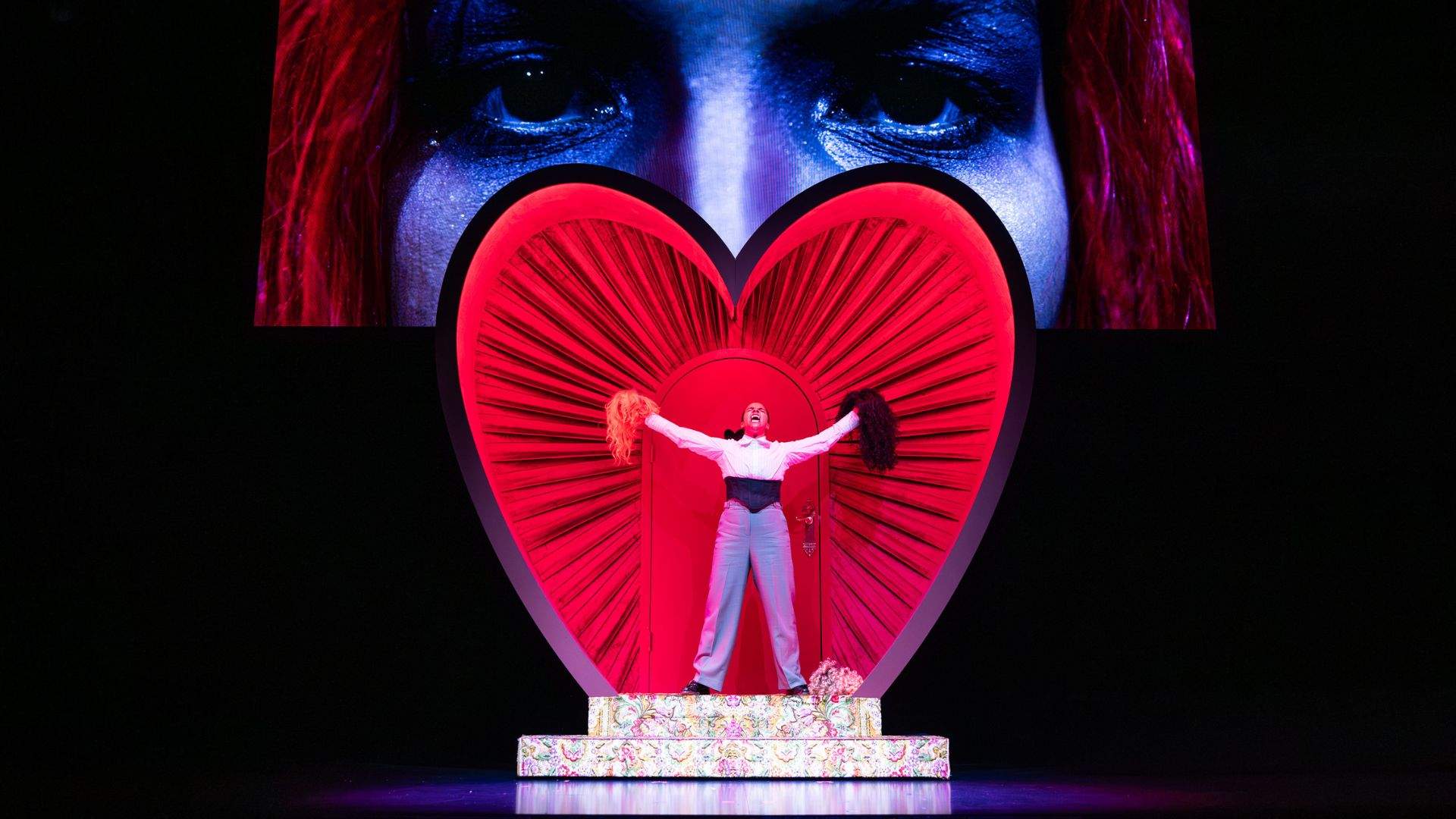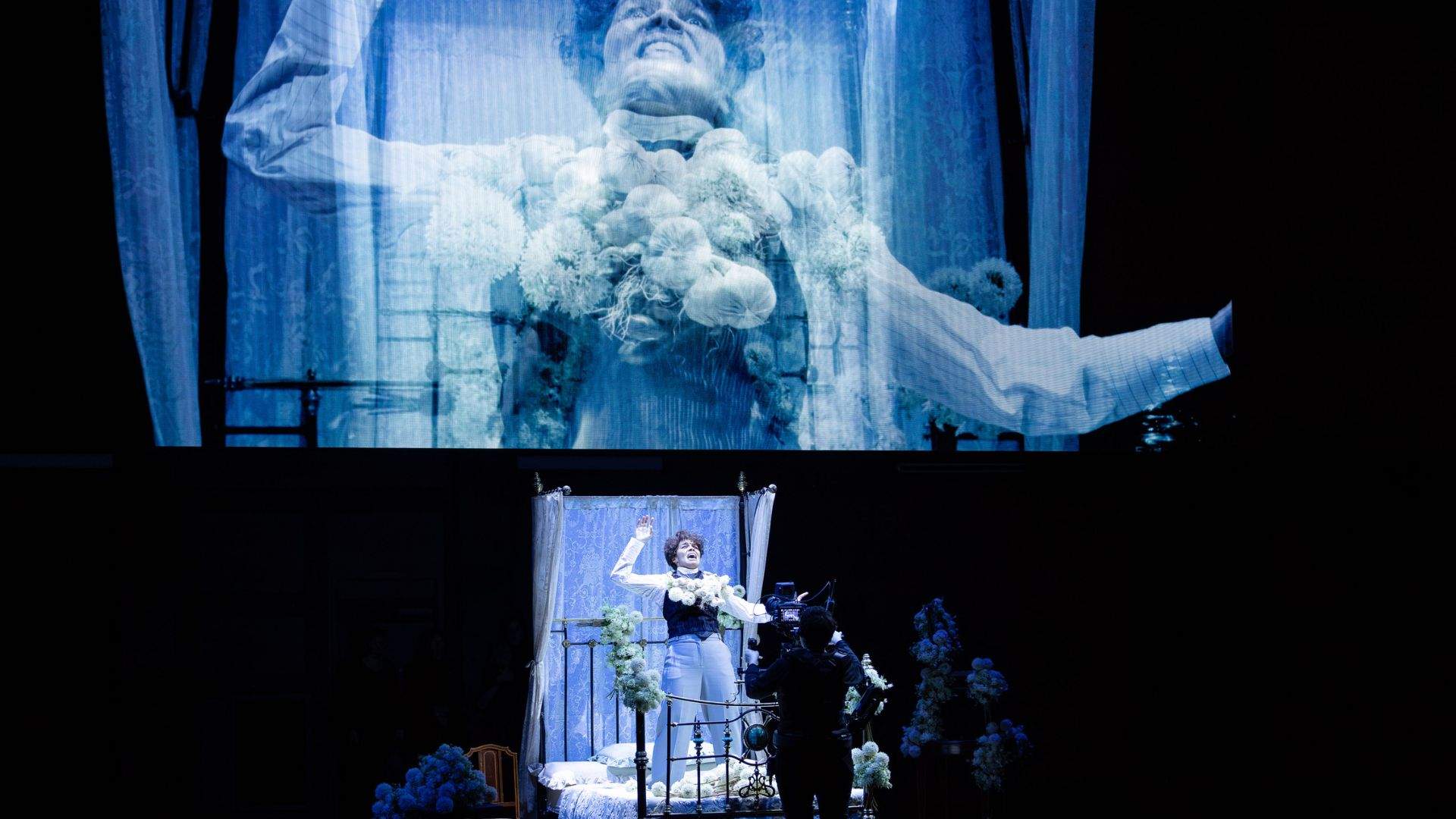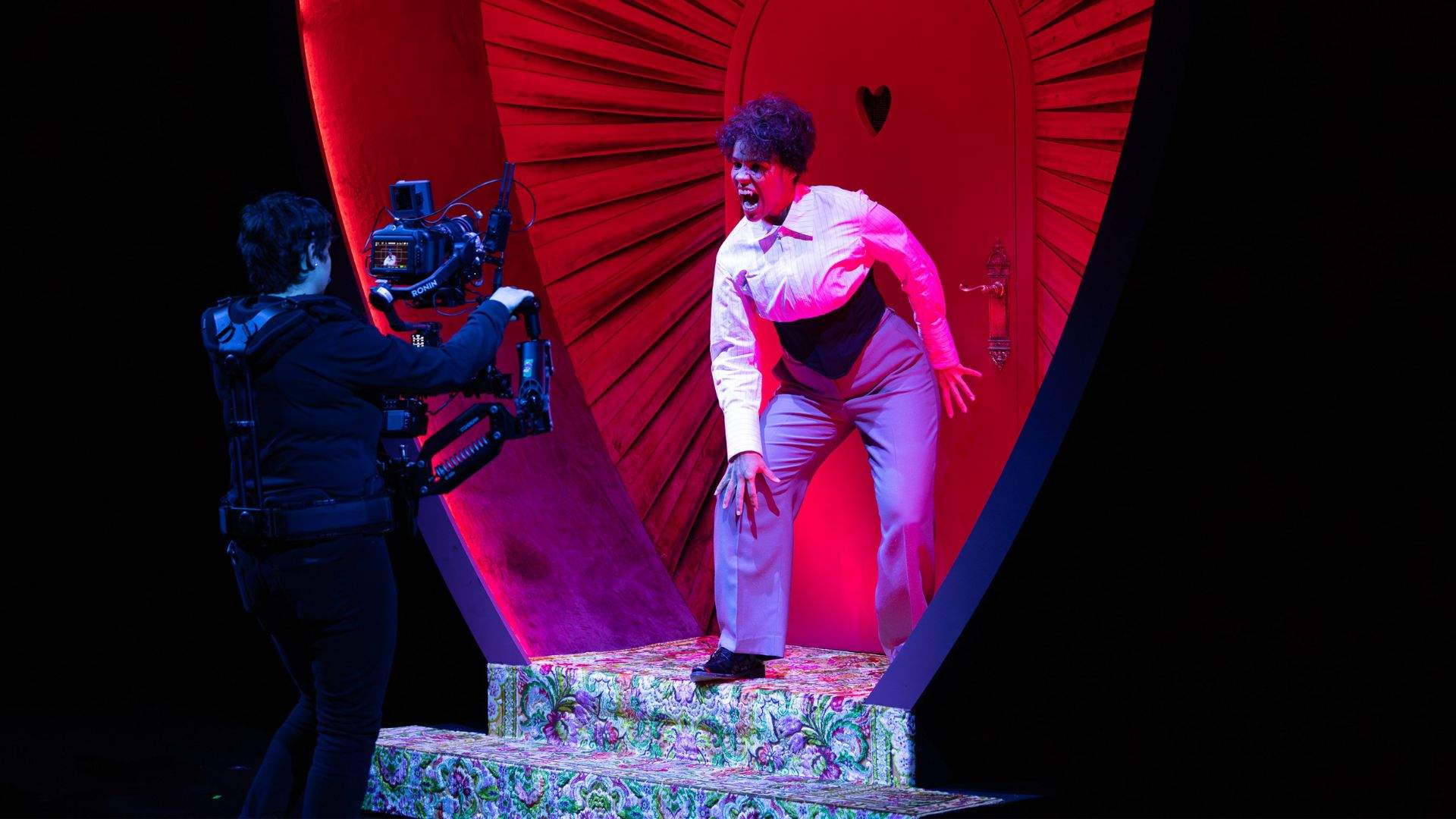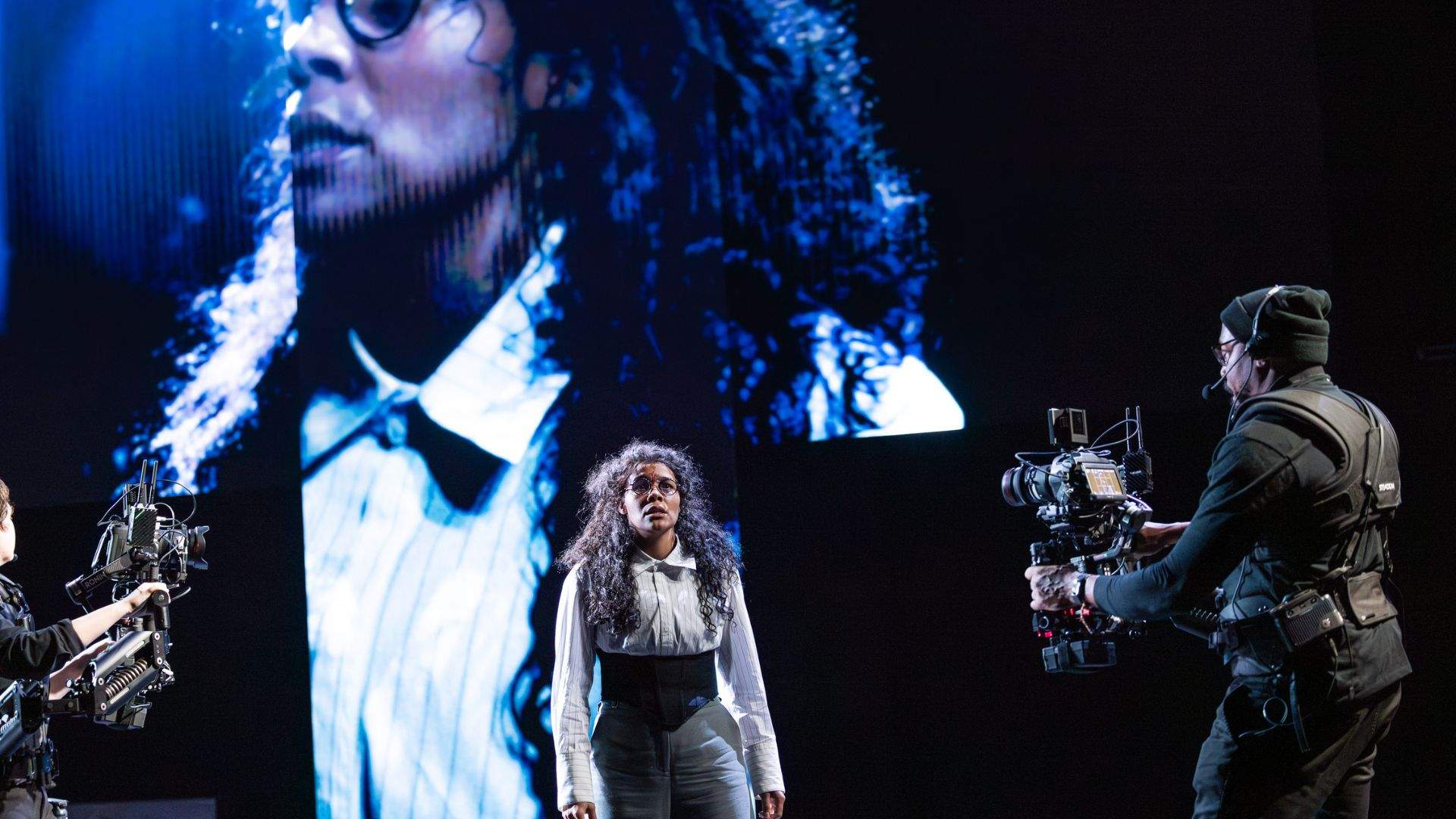Dracula — Sydney Theatre Company
A bloodthirsty Zahra Newman wows in STC's final romp into director Kip Williams' innovative cine-theatre retellings of gothic masterworks.
Overview
With several smash-hit Australian seasons and an Olivier Award-winning run in the West End already under its perpetually youthful belt, plus a 2025 transfer locked in on New York's Broadway, there has rarely (if ever) in the history of Australian theatre been a production as globally successful as Kip Williams' jaw-dropping adaptation of Oscar Wilde's The Picture of Dorian Gray. Trailblazing a new genre of cine-theatre, its fusion of live performance with real-time video capture and prerecorded elements has consistently blown the minds of audiences since its premiere in 2020.
Given the impact of that production, it was inevitable that Williams' farewell as STC's outgoing Artistic Director would be one final display of the revolutionary stage-meets-screen storytelling that has so defined his 13-year tenure. And it was equally inevitable that such a production would draw comparisons with its endlessly celebrated older sibling. Now that Bram Stoker's vampiric 1897 novel has been given the Dorian treatment — starring a solitary performer transformed into multitudes via a handful of props, some wigs and quick changes, a carefully choreographed troupe of camera operators, a collection of flying screens and an audacious amount of talent — the question lingers: will worldwide acclaim also ensue?
It certainly wasn't so for the middle child of Williams' trilogy of gothic retellings, with the internationally blockbusting Dorian Gray followed in 2022 by the somewhat less-triumphant Strange Case of Dr Jekyll and Mr Hyde — a moodier two-hander that failed to enrapture with quite the same intensity as its predecessor. Despite this stumble, Williams' vivid, thrilling and relentlessly inventive Dracula reaffirms his mastery of a vernacular of stagecraft that he has been prototyping for the better part of a decade.
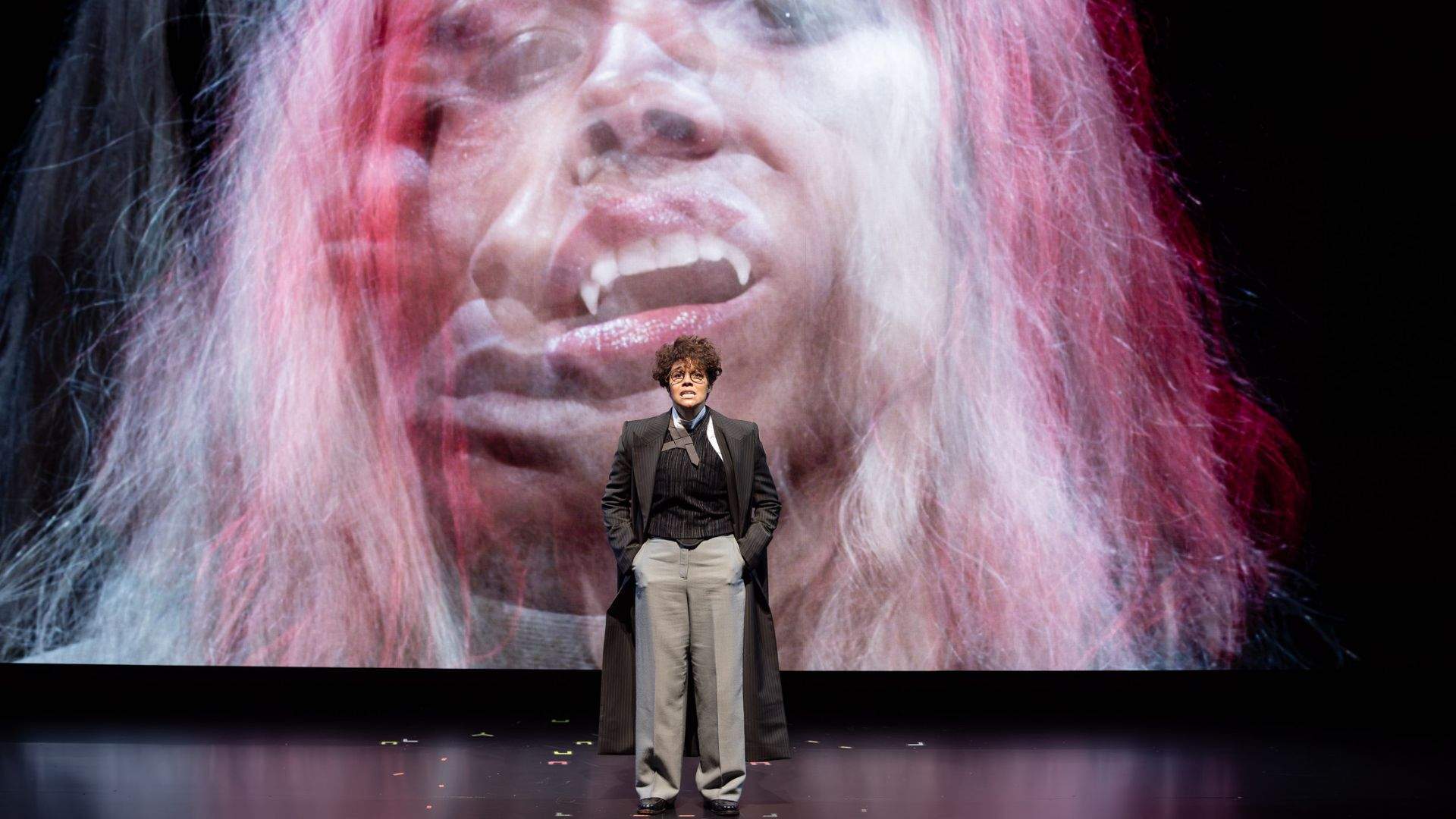
Various pathfinding productions by this director, including Tennessee Williams' Suddenly Last Summer in 2015 and 2016's Miss Julie for MTC, toyed with the intersection of cinema and stage, integrating moments of screen time into otherwise largely conventional shows. This led to the astonishing 2018 production of Brecht's The Resistible Rise of Arturo Ui, starring Hugo Weaving (The Royal Hotel), which introduced roving camera operators for the first time.
Each production in this continuum of film-stage hybrids has pushed both the technology and the performers further and further, restlessly searching for new frontiers and untapped potential. By contrast, Williams' Dracula doesn't seem to offer much that hasn't already been seen in its progenitors. And yet, if previous shows can be considered experiments, Williams' most-recent production represents cine-theatre in its most-perfected form — the final evolution of an emergent art form that will be his enduring legacy.
Much like Dorian Gray, first portrayed with Herculean skill by Eryn Jean Norvill and most recently in London by Succession's Sarah Snook, the power of Dracula hinges on the performer at its centre. We meet Zahra Newman in a state of flux. Her prone body writhes and vibrates as superimposed doppelgängers desperately grope around her, some forcefully ejected from view, others yanked inward, back into the seething form. There could hardly be a more perfect setup for a show in which Newman must not only flit from one character to the next, but also perform with multiple prerecorded versions of herself.
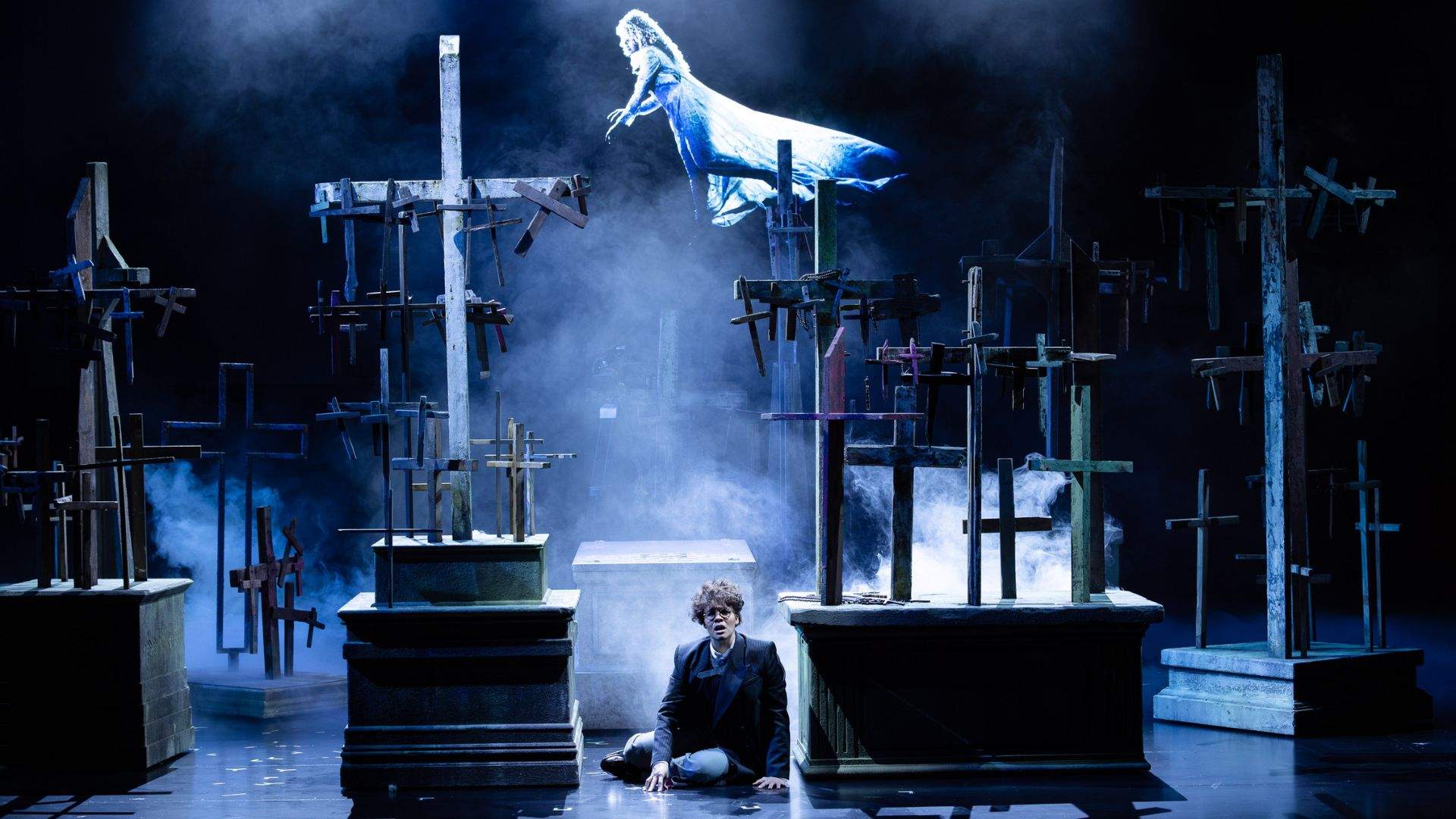
While Stoker's text does not aim for comedy, Count Dracula as a pop-culture icon can be camp. Williams and Newman lean hard into these kitsch tropes, particularly in the realisation of Van Helsing as a Gandalf-haired woo-woo shaman and the lip-licking, predatory, subtly queer sensuality of the Count himself. Borrowing again from Dorian, these pop-culture winks play with anachronisms that throw the period source material into stark relief. However, where Dorian's commentary on impossible beauty standards and influencer artifice felt fresh and urgent, Dracula's sometimes-goofy nods to B-movie horror feel less relevant — not that this detracts from the sheer virtuosity of Newman's performance.
To navigate an epistolary narrative told through the journal entries of various protagonists, Newman has crafted a rich array of fully rounded characterisations. Gifting each with depth, nuance and a physical clarity that never falters, she deftly hops between Jonathan Harker, his fiancée Mina, macho cowboy Quincey Morris, the trio of buxom succubi in Dracula's castle and many others (23 characters in total) — every one unique and unmistakable. It's a breathtaking feat, in itself worth the price of admission, as once again Kip Williams creates a spotlight for one of our most-gifted actors to show us everything they're capable of.
As Dracula unfolds, there's a real sense that every lesson, every gamble, every trial-and-error exercise of Williams' career has been distilled into one definitive event. Will it be as globally revered as The Picture of Dorian Gray? With so much DNA shared between the two, the answer may already be pumping through Dracula's veins.
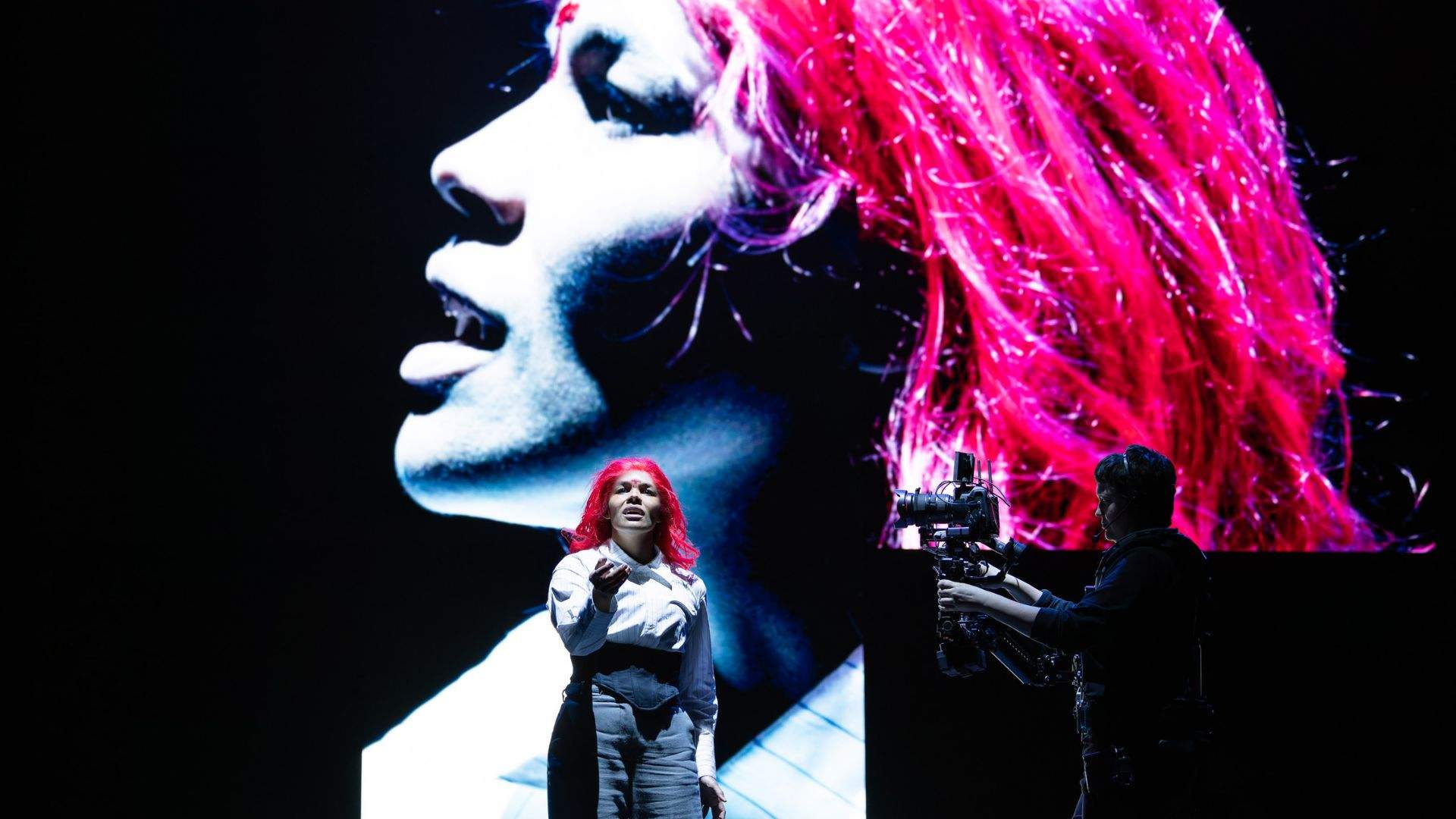
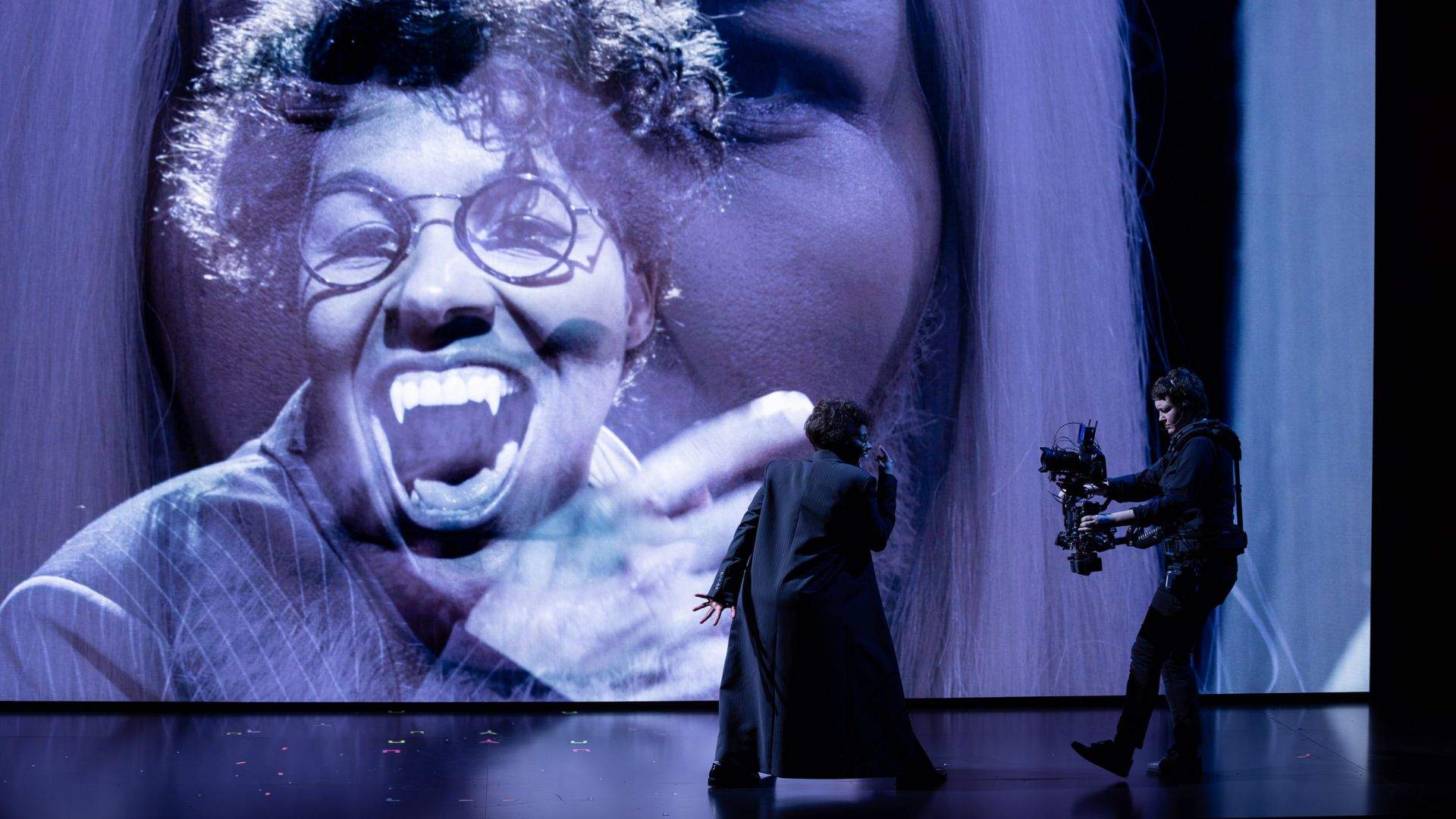
Images: Daniel Boud.
